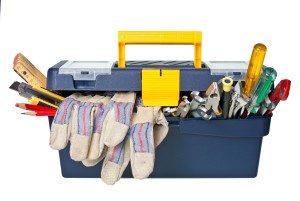I'm hosting Thanksgiving for some family members and asked my friend Lynn if her daughter would like to come. Her daughter recently moved to San Francisco and I thought she might be "stuck" here for the Thanksgiving holidays. There's no way I could enjoy scarfing down my ninth deviled egg and third piece of pumpkin pie, let alone squirting the whipped cream directly into my mouth, if I knew that somewhere in my city was a young woman eating take-out alone in her apartment.
No, Lynn said. Her daughter will be hosting a Friendsgiving for her friends and coworkers who are also "stuck" here.
What a great idea!, I thought. And then: More whipped cream for me. No! I did not think that.
Thanksgiving is the toughest holiday if you've just recently moved away from your family. For Christmas or Hannukah, your school or employer will most likely give you enough time off to travel back home. Same with Easter and other major holidays. But Thanksgiving? You're lucky to get the day before and the day after off work. Best case scenario, you're traveling to and fro on the busiest travel days of the year. The Wednesday before Thanksgiving and the Sunday after are brutal if you're traveling by car and even more horrendous if you're flying. Personally, I'd rather eat haggis alone in a dark, damp Turkish prison on Thanksgiving than negotiate the San Francisco airport on the Wednesday before the fourth Thursday in November.
Two things
Two things make being away from family tough on Turkey Day: One, no matter what your race, religion, beliefs or lifestyle, Thanksgiving is a holiday celebrated by every American. It's for all of us. It's also why we are the most gluttonous, flabby nation on earth. Our big national holiday is centered around a fat, giant bird filled with carbs. I use an average of five sticks of butter to make a typical Thanksgiving dinner. God bless America.
Two, it's not like you can celebrate it remotely. Thanksgiving is all about sharing one big meal with those you love. You can send Christmas gifts and Easter baskets through the mail, but you can't overnight the mashed potatoes that your family loves. Well, you could try, but the gravy would ruin the box.
So here's what you do
If you're just recently moved away from home, you've been put through the wringer enough. Adjusting to being away from family at the start of the holiday season is doubly difficult.
So find yourself some friends, take these tips that I found on the Internet, crack open that box of wine and have a Friendsgiving to remember!
Make it potluck
Hosting a Friendsgiving is different than hosting a real Thanksgiving. For your friends, let everyone contribute what they like to make. Divide up the duties, too. Put one of your guests in charge of music, another in charge of setting the table, and designate another as bartender.
Have something to do
When you're with your family, you've got that crazy uncle to entertain you. He won't be with you this year, so you're going to have to come up with your own entertainment. Games - card games, board games, drinking games, memory games - are the answer. Or take a walk or a hike. Don't go Black Thursday Night shopping; you'll bum everyone out with that suggestion.
Now's your time to break tradition
Back home, Grandma is making butterhorns the way she's been making them forever, Mom is cooking a turkey the way she's been cooking it forever, and Dad is serving Manhattans - not spiced wine, not beer, not a new, fun drink - but Manhattans, because that's what we do every year; it's a tradition, dammit, and that's what Thanksgiving is all about! But that's not what Friendsgiving is all about. You get to break all the rules, make it up as you go along. Shoot, you can serve lasagna if you want. Be sure to brag about it to all of your relatives. Have fun pissing off your aunts and uncles.
More Friendsgiving ideas
Orphan Thanksgiving: How to Host the Ultimate Friendsgiving If You Can't Go Home: Don't obsess about duplicates. "So what if three people bring a green bean casserole? They're all going to be different, and they're all going to get eaten."
Why Your Friendsgiving Is Always Better Than Your Thanksgiving: Because a Friendsgiving is so much more than just expensive dish-ware and 18 pound turkeys… It’s boxed wine, instant mashed and one too many stories; it’s laughing until you fall out of your chair and fighting over who does a better moon walk.
Nine Tips for Friendsgiving: A Foolproof Guide for Thanksgiving With Your Friends: Don't overplan. Once the date arrives, let the dinner and the festivities flow naturally and just have fun!
10 Reasons Why Friendsgiving is Awesome: You're allowed to drink as much as you want. Seriously.
~~~
If you like Diane's humorous take on moving, you'll love her book Home Sweet Homes: How Bundt Cakes, Bubble Wrap, and My Accent Helped Me Survive Nine Moves.


















